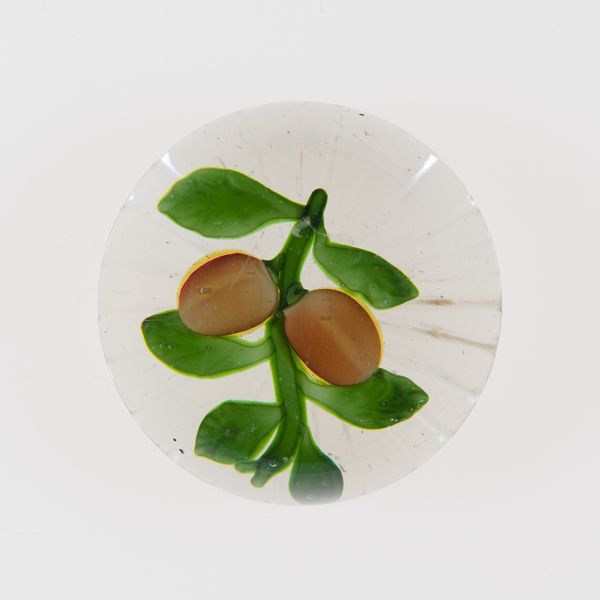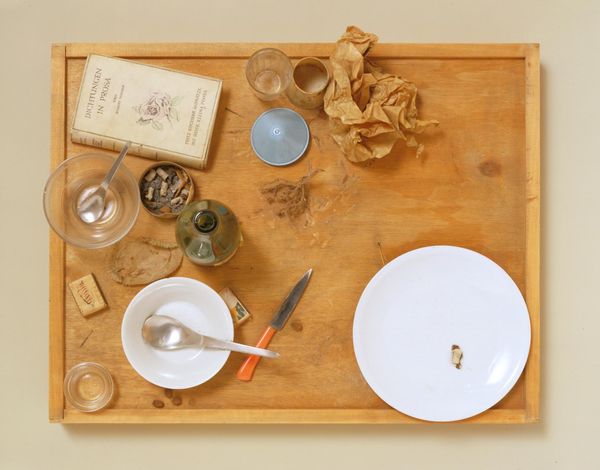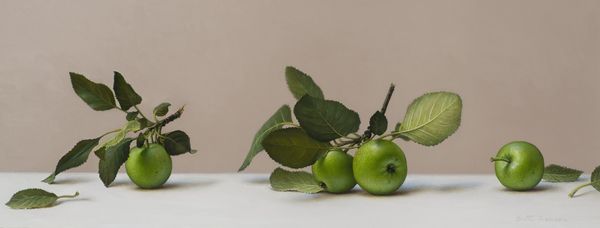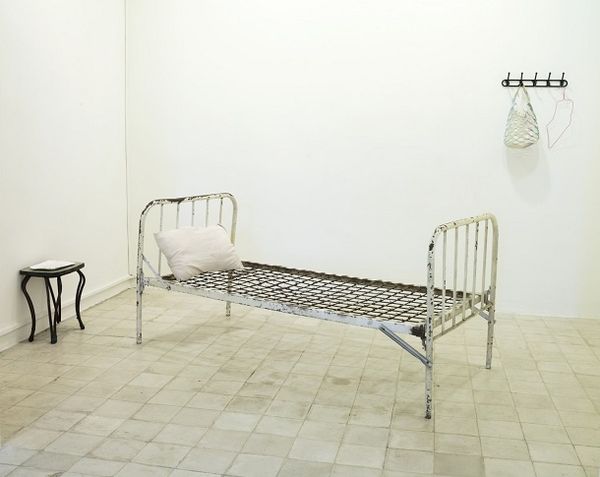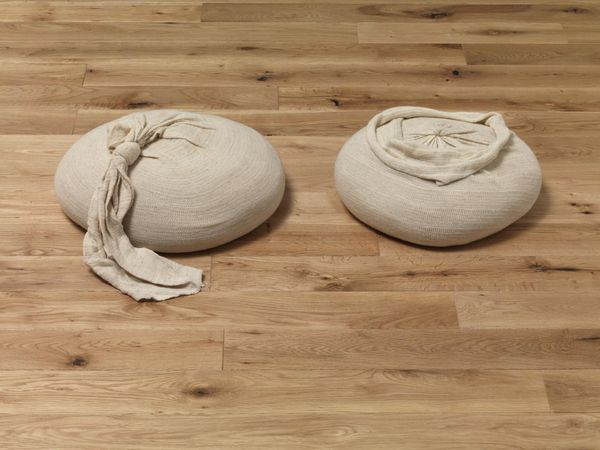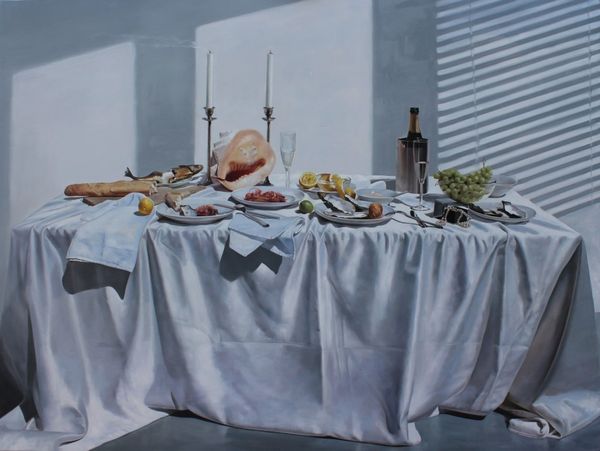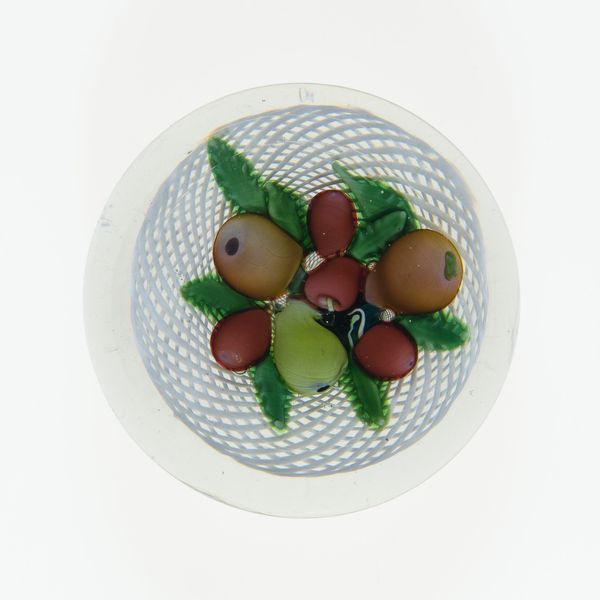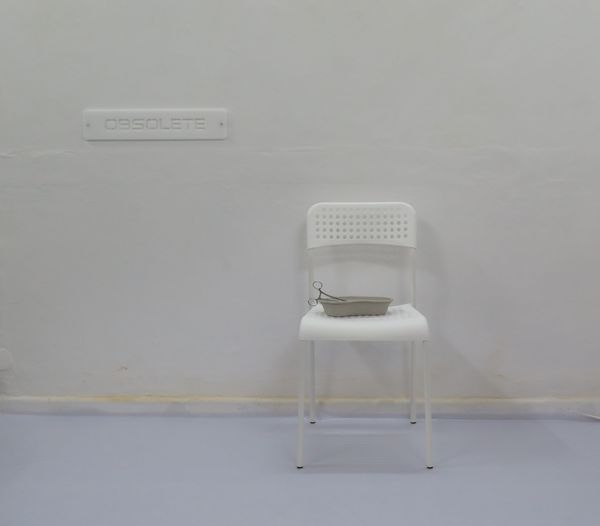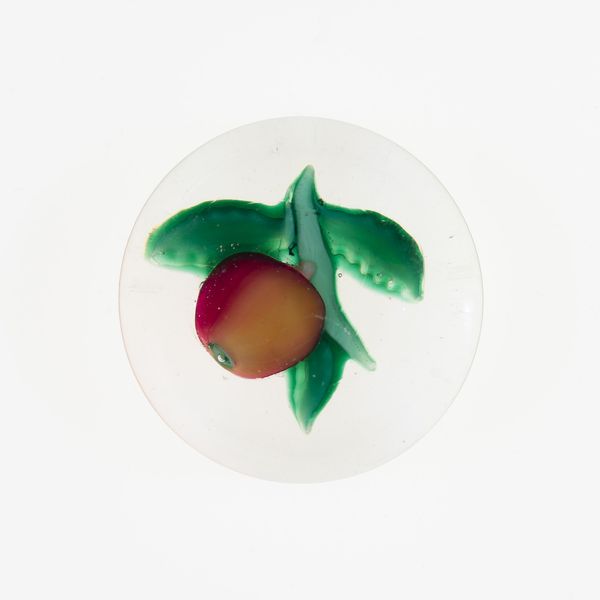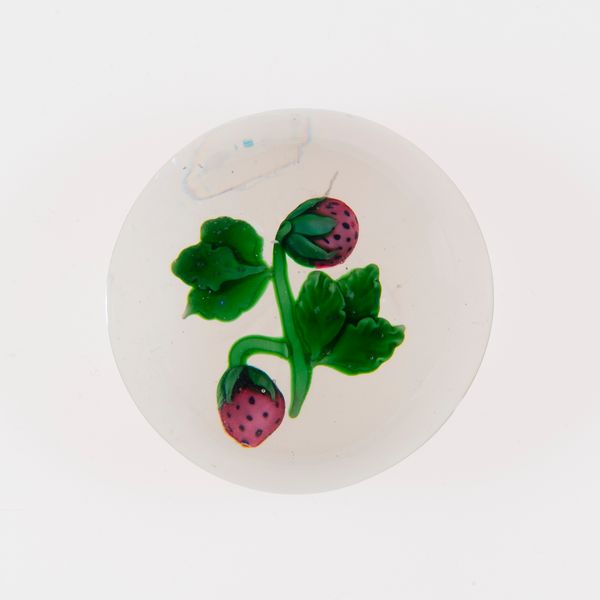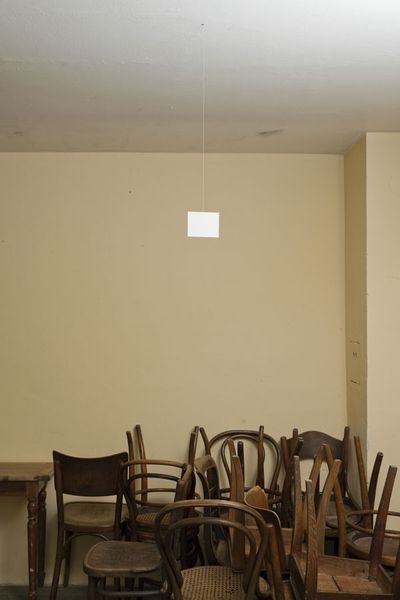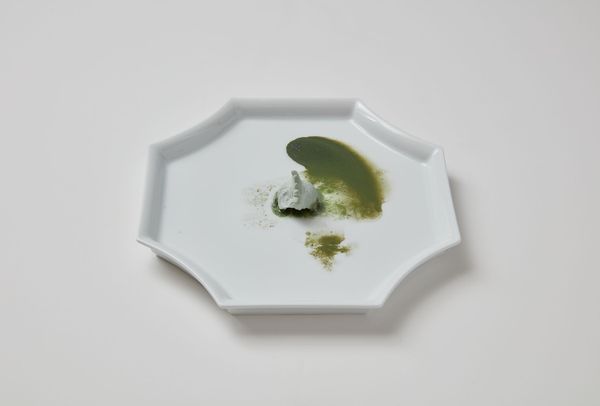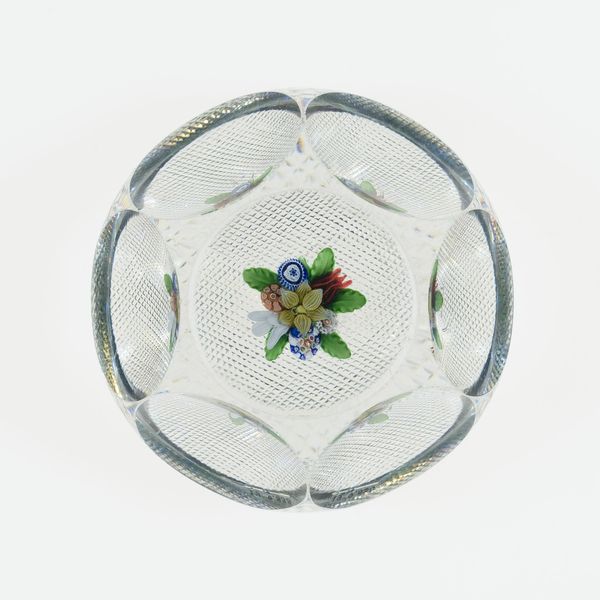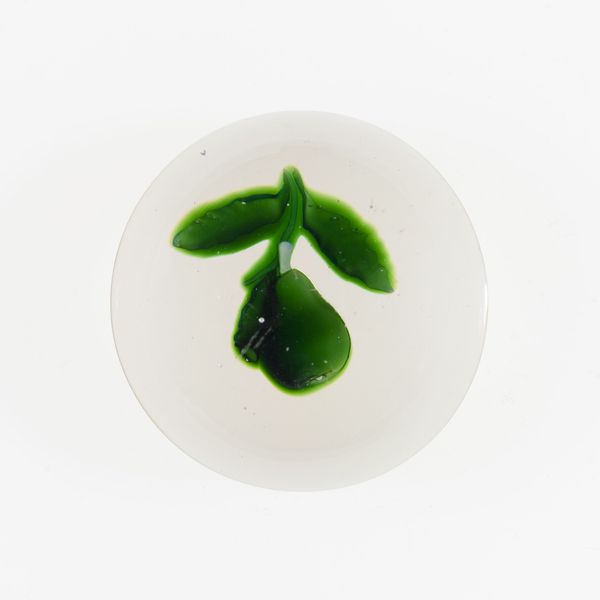
#
simple decoration style
#
water colours
#
possibly oil pastel
#
oil painting
#
stoneware
#
underpainting
#
painterly
#
painting painterly
#
watercolour bleed
#
watercolor
Copyright: All content © Elina Brotherus 2018
Curator: Welcome. Here we have Elina Brotherus' photograph "Rotten Tomatoes" from 2015. I’m struck immediately by its... coolness, its almost mournful stillness. The palette is muted, almost as if time itself is pressing down on this ordinary scene. Editor: Yes, those subdued greens and whites give it a distinctly aged feel. It really speaks to the quiet labor involved in agricultural cycles. But "Rotten Tomatoes"? I wouldn't say these are rotten... maybe just not perfectly ripe? I wonder what kind of intervention went into getting the produce—are we talking organic heirloom varieties cultivated with significant effort? Curator: Precisely! And look how carefully Brotherus has composed it, that patterned tablecloth and the tile flooring frame those tomatoes as the main subject. But to your question about 'rottenness', for me, the title introduces a bit of playful irony. These aren't your mass-produced supermarket variety. These tomatoes, with their imperfections and subtle color variations, offer a raw beauty, and feel more ‘alive’ than anything industrially farmed. It’s a clever disruption. Editor: I can see your point about the visual disruption... And, to the idea of something imperfect having its own character—definitely! But there's an irony, too, I think, in using what appears to be an antique porcelain serving dish, that suggests some value or significance conferred onto the food—even when not perfect. And it's precisely *this* clash of high and low, food, art, decay, value that the photograph emphasizes. The labor is invisibilized—erased through presentation! Curator: Perhaps Brotherus invites us to slow down and acknowledge those normally unseen processes, I think. And it challenges the artificial standards of perfection we impose on everyday items and tasks. We consume images of flawlessly ripe, vibrant produce every day, and in a sense we expect that from reality. But what's genuinely interesting, or tasty for that matter, can exist outside such rigid definitions of acceptability. Editor: Absolutely, and thinking of value—in making us think of where food *comes* from— the artwork offers more food for thought, than actual 'food', which here only stands for agricultural and presentational *labor.* It offers very fertile ground for questions concerning production, consumption and value, and our relationship to both. Curator: Ultimately, it offers such a thoughtful visual contemplation on our perception of beauty and utility. Editor: And it reminds us that nothing, even tomatoes on fine china, escapes material decay!
Comments
No comments
Be the first to comment and join the conversation on the ultimate creative platform.
